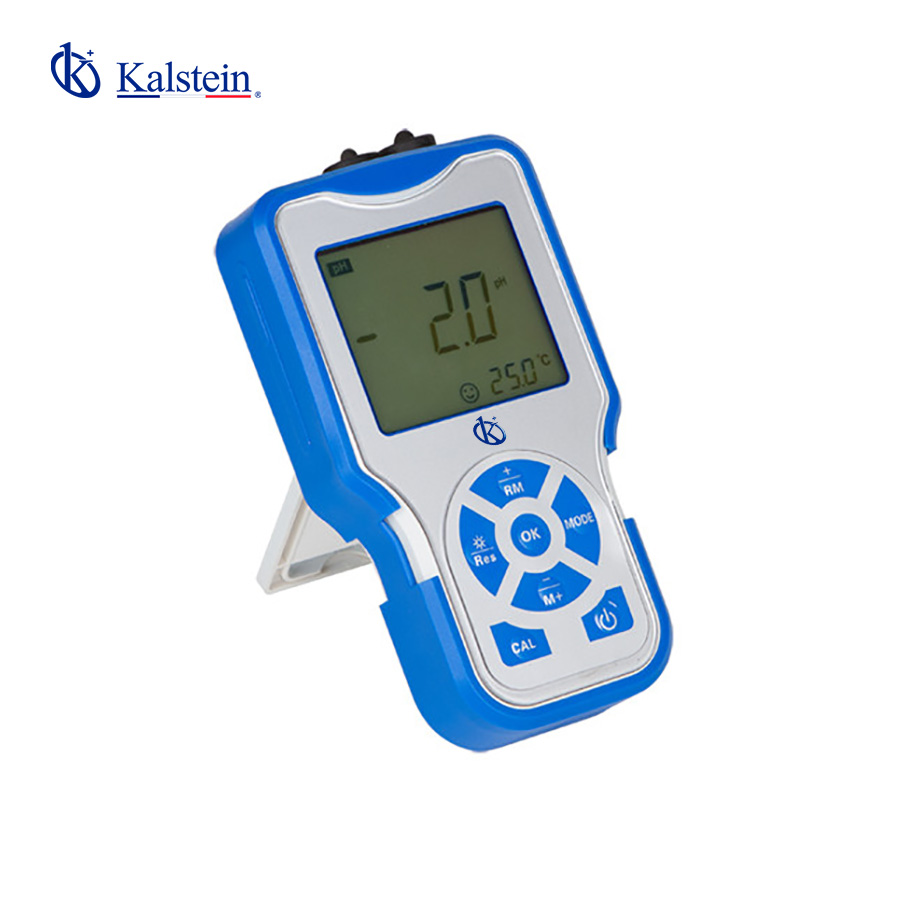The ion meter sector has experienced significant advancements in recent years, driven by the need for precision and efficiency in modern laboratories. These devices, essential for measuring ion concentrations in solutions, have evolved to offer greater accuracy, ease of use, and advanced capabilities. In this article, we will explore the latest trends in the ion meter sector and how these devices align with these trends.
If you wish to explore the high-end product catalog we have for you at KALSTEIN, visit us at https://kalstein.eu/categorie-produit/laboratory-sector/ion-meter/?lang=en. We assure you that through our easy and feasible online purchasing channels, you will find the best prices in the market. We remind you that at KALSTEIN, we manufacture high-level laboratory equipment for sale. https://kalstein.eu/?lang=en
Trends in Precision and Accuracy
Precision and accuracy in ion measurement are fundamental in many applications, from scientific research to quality control in the food and pharmaceutical industries. One of the most notable trends in the sector is the development of ion meters with improved sensors and advanced calibration algorithms that ensure more precise results.
Modern ion meters are designed to minimize the margin of error and provide reliable readings even under challenging conditions. These advancements allow laboratories and industries to trust the data obtained for critical decision-making, highlighting the importance of investing in high-quality equipment. Additionally, the integration of automatic calibration technology and high-sensitivity sensors has raised accuracy to new levels, eliminating the need for frequent manual adjustments.
Automation and Ease of Use
Another significant trend in the ion meter sector is automation. Laboratories are constantly seeking ways to improve efficiency and reduce the time spent on routine tasks. Current ion meters incorporate automated functions that simplify the measurement process and minimize user intervention.
Ease of use is a critical aspect that has been enhanced with intuitive user interfaces, touchscreen displays, and advanced software that guides users through the measurement process. These improvements not only increase laboratory efficiency but also reduce the risk of human error, ensuring more consistent and reliable results. The integration of these features allows technicians to focus on more complex and value-added tasks.
Connectivity and Real-Time Data
In the age of digitalization, connectivity and access to real-time data are essential. Modern ion meters are equipped with connectivity capabilities that allow for data transfer to laboratory management systems (LIMS) and other data analysis platforms.
The ability to monitor and analyze data in real time enables users to detect anomalies and make quick, data-driven decisions. This is particularly important in critical applications where changes in ion concentration can have significant consequences. Connectivity also facilitates collaboration among research teams and the integration of data into broader studies.
Sustainability and Energy Efficiency
Sustainability and energy efficiency are global trends that are also influencing the design of ion meters. Manufacturers are developing equipment that is not only more energy-efficient but also made from more sustainable and environmentally friendly materials.
Reducing energy consumption has both environmental benefits and the potential for significant long-term operational cost savings. Furthermore, equipment designed with a focus on sustainability often meets stricter environmental regulations, which is crucial for industries operating in regions with rigorous standards.
Versatility and Multiple Applications
The versatility of ion meters is another important trend. Laboratories and industries require equipment that can adapt to a wide range of applications and conditions. Modern ion meters are designed to be highly versatile, allowing their use in various industries such as food, pharmaceuticals, environmental science, and water treatment.
This versatility is achieved through the capability of these devices to measure multiple types of ions with a single instrument, as well as their adaptability to different environments and sample conditions. This feature is particularly valuable in laboratories with varied and changing needs, allowing for greater flexibility and optimization of resources.
Innovations in Design and Ergonomics
The design and ergonomics of ion meters are also evolving to enhance user experience and operational efficiency. New models are more compact, lightweight, and easier to handle, facilitating their use in the lab and in the field.
Improved ergonomics reduce user fatigue and enable safer and more efficient handling. Additionally, advancements in design include improvements in durability and robustness, making equipment more capable of withstanding challenging conditions. These design innovations not only enhance functionality but also contribute to the longevity and reliability of ion meters.
Current trends in the ion meter sector highlight the importance of precision, automation, connectivity, sustainability, versatility, and ergonomic design. Modern ion meters align with these trends, offering advanced solutions that meet the growing demands of laboratories and industries. As technology continues to advance, we can expect ion meters to keep evolving to provide higher levels of accuracy, efficiency, and sustainability. Innovations in laboratory equipment and developments in medical devices will remain fundamental to driving these advancements and ensuring that users can rely on the results obtained to make informed and effective decisions.

